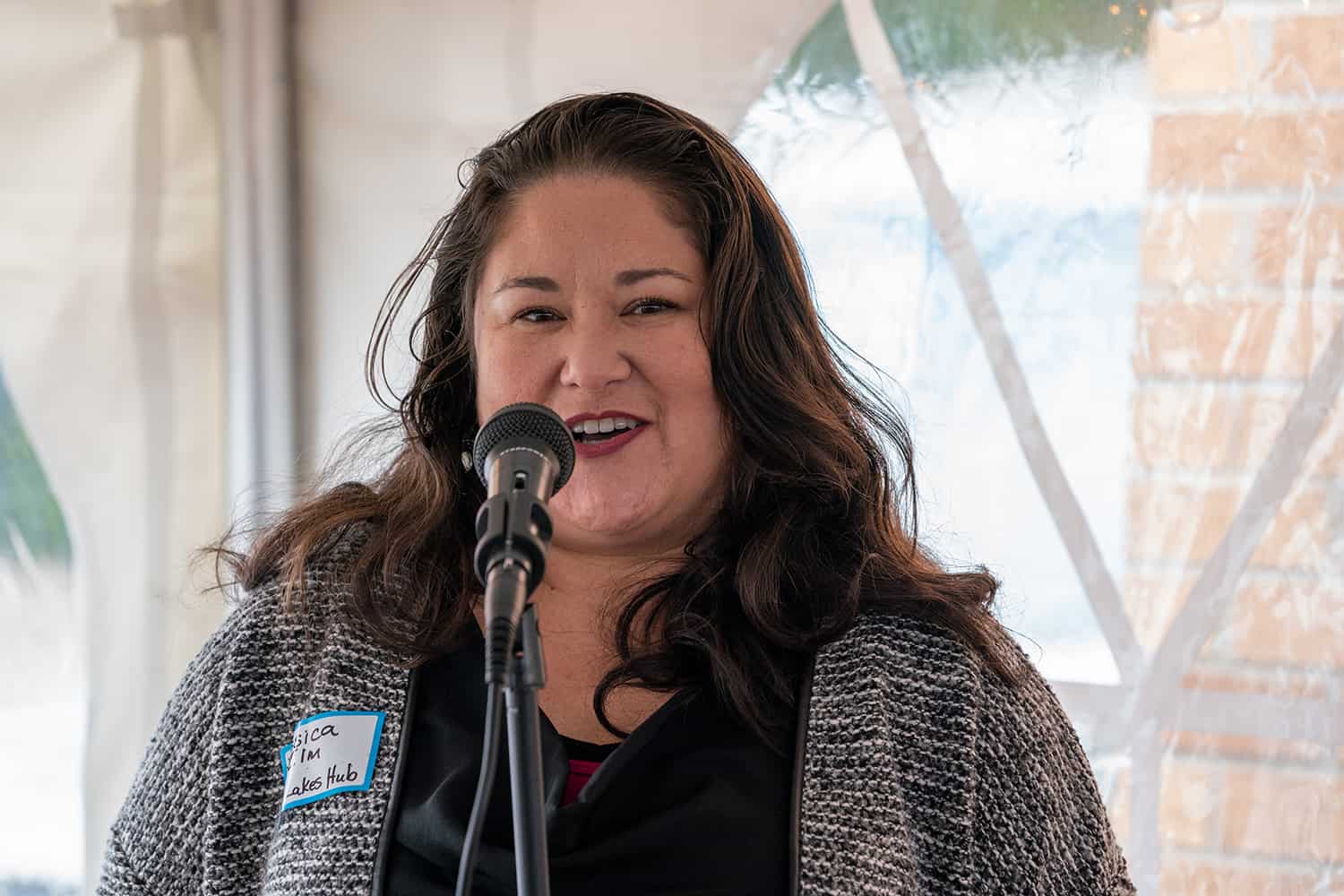
Jessica Elm recalls learning early on that long-term stress can lead to serious health consequences.
“As a kid, I remember questioning the relationship between stress and health events like a heart attack,” recalls Elm, a citizen of the Oneida Nation, descendant of the Stockbridge-Munsee Band of the Mohicans, and postdoctoral researcher at the Johns Hopkins Center for American Indian Health.
Today, as a social worker-turned-scientist working with Dr. Melissa Walls in Duluth, Minnesota at the Center’s Great Lakes Hub, Elm studies how health disparities in indigenous communities have roots in historical trauma—the aftereffects of colonization and federal policies like forced assimilation in boarding schools—as well as Adverse Childhood Experiences (ACEs).
In addition to emotional and mental health effects resulting from harsh boarding school environments, boarding schools meant children no longer experienced healthy, traditional parenting—instead, many became vulnerable to adversity.
“The literature on ACEs is really expansive and has driven policy and program development,” said Elm, who earned a masters in social work from the University of California, Berkeley, a PhD from the University of Washington, then worked as a policy analyst at the National Council of American Indians (NCAI). A seminal study on ACEs in the general population from the 1990s showed that childhood maltreatment including physical abuse and family dysfunction had significant effects on physical health, such as diabetes and heart disease, as well as mental health, lasting many decades after the original adversities took place.
“But for Native people who have disproportionately high exposures to adverse childhood experiences, the research is really limited,” said Elm. “I’m working to understand this better,” she said.
Asking the right questions to illuminate Healing Pathways

Elm is studying the role of stress in health with Healing Pathways, a community-based participatory research project that’s one of the longest running efforts looking at Native American communities ever to be funded the National Institutes of Health. Beginning with a first NIH grant in 2002, Healing Pathways has followed 746 American Indian and First Nations youth and their families living in eight reservation and reserve communities in Minnesota, Wisconsin, as well as in Ontario, Canada.
The study, known locally as Maawaji’ idi-oog mino-ayaawin, is powered by community members who gather data and conduct interviews with participants via questionnaires designed by scientists like Dr. Elm in collaboration with community members. Interviews delve into tough topics including substance use, violence, and depression. Dozens of publications authored by an exemplary team of indigenous scientists including Les Whitbeck and Melissa Walls have reported on significant findings, such as the discovery that substance use for Indigenous youth peaks earlier than in the general population—a finding that has informed prevention campaigns across Canada and the U.S.
“We’ve also found that individuals with diabetes tend to have more childhood adversity and a greater incidence of mental health challenges,” said Elm.
Harvesting traditional stories
Healthy Pathways questionnaires also highlight traditional strengths—how factors like cultural identification and connection can mitigate and buffer stress (such as racial discrimination) and trauma (such as Adverse Childhood Experiences) experienced by community members. Paraprofessional interviewers seek to learn about the origin of protective values like resilience, connectedness, and perseverance by asking about positive childhood experiences—did people have at least one caregiver that spent time with them? Did they spend time doing cultural activities?
“In the upper Midwest in late summer and early fall, many tribal members traditionally harvest rice by going canoeing,” said Dr. Elm. “You’re out there on the lake with an elder and you’re listening to stories,” she said, suggesting that exposure to these traditions could increase people’s resilience to stress.
Looking at genomics for answers
Genomics are providing yet another frontier to pursue in her journey to understand the biological consequences of stress. Elm participated in the 2019 Summer internship for Indigenous peoples in Genomics at the University of Illinois, learning how to amplify and sequence a fragment of her own DNA. She also spent time with other indigenous participants discussing the implications of genomics research involving ancestors and communities.
“I’m exploring this area now—how can we show more biologically that contemporary stressors, which are rooted in historical trauma, interact with genetics?”
Elm admits that as a researcher, the complexity of her background and approach is unusual. She’s something of a pragmatic, determined unicorn searching for the origin of health challenges—and solutions that should be taken up by policy makers tomorrow.